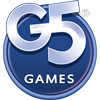The Rabbit and the Owl is the debut game of Formal Sheep, a game development company founded by Gary Chao in March 2016. It was greenlit at #24 on Steam in March and has been exhibited at the Sacramento Indie Arcade, iFEST, Power of Play, and Indie Prize. The game was also shown at PAX West in the PAX Rising section and had their Kickstarter campaign funded by day 5. Gary Chao tells more about what inspired the game’s development, and how exactly.
when the first idea works
We’ve been in development for just over a year now (development officially started in August 2015). However, it goes much further back than that. You’ve probably read at some point that the first game idea never works. Although The Rabbit and The Owl is our “first” game, it’s hardly the first idea. Before I built the team around the game, it was just me and a dream and a lot of fiddling around with different ideas since as far back as 2012. Here are some things I’ve prototyped (i.e. spent at least a month on): a twin-stick shooter, a point-and-click adventure game, a Worms clone, a Pokemon clone, a hero defense… the list goes on.
The common reason why I abandoned each of these games was simply that I felt I was trying to emulate too similarly to the games they were inspired by instead of coming up with a unique core mechanic. I would always ask myself, “Why would they buy my game instead of buying X” (X being whatever game I was being inspired by at the time)? I could never come up with a real answer.
black background, white foreground
The idea that ultimately led to negative space spawned from the last idea I had, which was a pirate-themed action-platformer that I called The Lost Treasure of Bootydamus (I love that name). This was in April 2015, so at this time I had been living at home for almost a year already trying to come up with game ideas. I was using the breathtaking programmer art of black squares with a white background.
I was looking at one of the levels when I lost focus for a second during which my brain suddenly switched perspective to where the black was now the background and white was the foreground. That jolted some excitement. After some research, I saw there were not really many games using negative space so I decided to change my platformer into incorporating two players, one in black and one in white.

Several months passed and while I was continuing to work on the game, I was getting really burned out. I was just considering getting a regular job, moving out of home, and living my life. By the summertime, I had multiple levels prototyped.

Motivation
Progress slowed down drastically after my initial prototype levels. The idea of turning it into a full game complete with features was daunting. If this was going to be a real thing, the real work was ahead. Working on so many game ideas since 2012 definitely took its toll.

I saw Indie Game: The Movie was streaming on Netflix, so decided to watch it. I had no idea of the ride of emotions and the feels I was in for. My anxiety levels watching that documentary skyrocketed, and I’m pretty sure I was in physical pain. As difficult as it was to watch, seeing the accomplishments of the developers it followed and their path gave me a new found motivation.
Black and white and opposite animals

At this point in August 2015 it was still just me. I knew I needed people to help. I still can’t believe the amazing team that I put together is for real. It felt like the stars aligned perfectly.
The first person I brought on was Andrew Chen whom I met on a trip to Vegas, where all great bonds are forged. I found out he was just finishing up school at Art Center College of Design in Pasadena, a school renown for producing game and entertainment industry artists.
The game was pretty barebones, still just black and white and no story to go with it. It was just producing some interesting puzzles and that’s all that was going for it. I wanted the project to look like more than just a simple Flash game, so I asked Andrew to see if he could frame it somehow in an artistic light. I couldn’t wrap my head around it since it felt it would be impossible to do without obfuscating the exact boundaries and barriers of the level design to keep the actual gameplay clear to the player. His first stab at it just blew me away, and I instantly knew he was a great fit.

We started with this weird treant and knight pair, but we kept at it until we came up with a rabbit and an owl. The black and white aesthetic naturally gave way to a sort of spiritual feel, so we went with a pair of animals that were naturally opposites.

Since then, we’ve definitely gone back and forth a ton to get the right look and nail down the specifics, and even now we’re still planning a lot of reworks for both the backgrounds and character animations to give more life to the game.

The Best Friend
Around the same time I recruited Andrew, I reached out to one of my long-time friends, Justin Olesen. This is the guy I’ve been playing games with since high school. We’ve played tons of custom Warcraft III maps, DotA, Borderlands, and more. I knew that with our many hours of shared experiences he’d be a valuable addition to the team. He was living at home figuring things out, so I thought I would offer him the opportunity.
Justin was actually the person to come up with the block dropping idea (before, the blocks just kind of hung there in midair). I wanted more variety than just levers and pressure pads and stuff – I wanted to give players more agency and choice. It was a great idea that just clicked and fused the whole idea of the Rabbit and Owl helping each other in each other’s worlds while offering physical constraints to make the players think about where and when to place them. Because of that simple idea, we were able to create much more varied and interesting puzzles. From there, Justin primarily started to work on designing puzzles with me and eventually started doing it on his own. Now, he also helps out with various tasks and exhibits the game with me. Thanks to him, he’s been able to offset a lot of hours so I can work on other things that need to be done like adding new game features and business development.

The Composers: another win
By coincidence, Justin’s sister’s husband’s step-brother (what a mouthful), David Huff, produced music for fun. I met with him to see if he’d be a good fit. His style of chill, atmospheric music didn’t feel like it would match, but I decided to give it a shot anyway. I discussed the sort of feelings we wanted for the game – to use piano primarily (black and white keys, black and white game!) and to straddle the line between joy and sorrow to represent duality and balance. Like Andrew, his first attempt was just instantly a winner.
I didn’t think my luck could get any better, but he also wanted to bring in one of his good friends, Patrick Neff, who was actually in my graduating class in high school. Patrick now had a master’s in Music Education and was a band director at a high school. Combined with Patrick’s talent for piano composition and David’s talent for producing accompaniment, it was a perfect fit. Thanks to the music these two have produced so far, it really started to put a tangible voice to the story of the game I wanted to tell which I previously thought wasn’t there.

The Meaning of the Game

This whole time while working on the game, I’ve been entrenched in a difficult long-distance relationship (which has come to an end at this point). This was spurred by my decision to move home to Sacramento instead of staying near Los Angeles so that I would have the space to pursue this without worrying about costs. Although she supported my decision, it was not easy. I imagine many people have been in a similar position before. As the game started to take shape, I started to see a lot of parallels between our relationship and the dynamic of the game.
The Rabbit and the Owl are close (our relationship), yet so far away (separated by distance). They help each other in the ways they can, reaching across that distance by dropping blocks or portals to lend a hand (emotional support). Sometimes the things that the Rabbit and Owl do affect the other’s path like activating a lever to reveal a previously inaccessible path or block off a previously accessible one (decision-making that affects the course of our relationship). Much of the story revolves around the romantic notion that these two characters are opposites but symbiotic. I think what the music and artwork really helped bring out was the subconscious desire to express the bittersweet state of my own relationship, and how ultimately we have to let go sometimes.
Showcasing
I founded Formal Sheep in March 2016 and announced the game with Steam Greenlight . It was very well received as we got to #24 on the charts against the other games trying to be greenlit. From there, we breathed a large sigh of relief as it appeared at the game was something that people wanted. We demoed at multiple other events, all of which people were excited by the game. A couple of my friends even cosplayed for us! Most recently, we showed at Indie Prize and PAX West.

Through all of the playtesting, we did make some notable changes to the game. One of the biggest examples is that blocks used to be attachable to walls, but we found the only use of them was to jump onto them which made precision placement mandatory. We didn’t want any unnecessary tedium in the game so we just took it out and adjusted the levels to compensate.

As you can see, the Owl needed some pretty precise placement so the Rabbit could make the jump. This turned out to be one of the best changes for the game as it really streamlined the levels. With every showing, the game gets more solid and tight in design.
When we received the news that we’d be showing at PAX, we just couldn’t believe it. What a journey it’s been. All the blood, sweat, and tears poured into the game and now it feels a bit validating to know that it’s not all for nothing, being accepted to show in the largest gaming convention in the US.
do things you don’t want to do

Another thing I want to mention is setting deadlines. Things that need to get done don’t really become tangible until it’s framed in a certain way – it’s funny how the mind works. Otherwise it just becomes lost in the “I can just spend another day” train that never ends. Working on this game has definitely built up a lot more discipline than I used to have.
Although the end is in sight with a projected release date sometime by mid-2017, there is still much to do. There’s a ton of competition in the indie space and the Formal Sheep team got to keep pushing. Gary hopes you’ve enjoyed reading about their journey so far, but so much of it has yet to be written.
Comments













